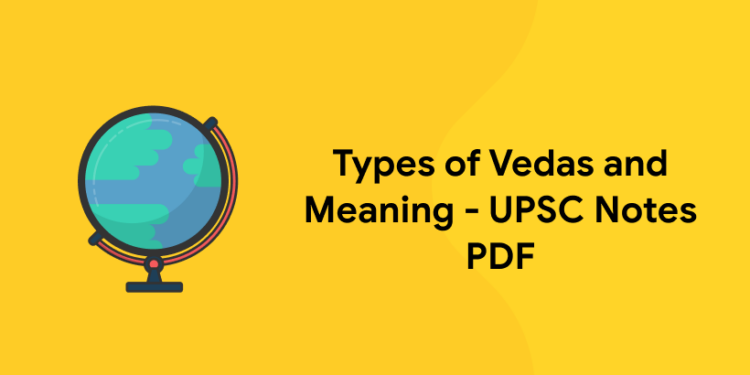Table of Contents
“Return to Vedas” This is one of the main flag mottoes or main teachings of the Aryasamaj founded by Dayanatha Saraswathi. Well, it may be right or wrong to say return to Vedas. But surely one thing can be affirmed that before you decide or advocate the return or enforceability of the Vedas it is essential to understand the Types of Vedas and meaning. Understanding the types of Vedas and meaning are essential in understanding ancient history also. Keep it simple like ancient literature and you will find a lot to understand and analyze inside the Vedas. Through this article let us look into the type of Vedas and Meaning.
Vedas – General Overview
Vedas are the literature after the Aryan invasion. The Indo Aryan invasion made Aryans prominent in northern India. The literature mainly consisted of Sruthi nature which means that is heard from the god itself. Thus, the Vedas are treated as literature that is heard from God itself. The word Veda is derived from the word Vid which means to know. The other implication is that, Veda means superior knowledge. The date of Vedas is not clearly depicted but it is around 1500-1000 BC. The Vedas are mainly classified into four:
- Rig Veda
- Sama Veda
- Yajur Veda
- Atharva Veda
Among these the Rig Veda is said to be the oldest one. The entire Vedic period is classified into two and is named by the name of Rig Veda. The early Rig Vedic period and the later Vedic Period. The early Rig Vedic period is the period when the Rig Veda is written.
Each Vedas consists of different heads such as Samhithas (hymn) which is the collection of Mantras. The Barhmanas (rituals) consist of the guidelines of rituals and rites to be followed. The Aranyakas (theology) means the forest texts consist of guidelines for leading a meditation. And finally the Upanishads (Philosophy) means the concluding part of each Vedas.
Rig Veda
1: Who was the first woman President of India?
Rig Veda which is also called the book of Mantras is the oldest Veda. It consists of Mantras or hymns. The Rig Veda samhita (collection of mantras) consists of 1028 suktas which are divided into 8 ashtakas (songs) which have 8 adhyayas (sections) which are sub divided into further 10,600 stanzas. The hymns are devoted to 33 different Gods such as Vaayu (Air), Agni (Fire), Prithvi (Earth), Varuna(Rain) Indra (thunder) etc.
Register in to get the latest Exam Study Materials, PDFs, Video Lessons, Mock Tests! Limited Offer!
Sama Veda
Sama Veda also knows the book of chants. It is purely the book of samans (Chants) which is derived from the 8th and 9th book of the Rig Veda. The Sama Veda is treated like couples by the priest such that Rig Veda is the husband and Sama Veda is the wife. The Sama Veda is the reduced form of Rig Veda which deals with the chants only. The hymns in Sama Veda used musical notes and no distinctive lessons of its own.
Yajur Veda
The Yajur Veda which is also called the book of rituals is detailed guidelines for the rituals to be performed in sacrificial rites. It lays down various Yajurs (sacred incantations) that are performed by a particular sect of priests called Adhvaryu. They perform the sacrificial rites. The Yajur Veda mainly serves as a guideline for that.
Register in to get the latest Exam Study Materials, PDFs, Video Lessons, Mock Tests! Limited Offer!
Atharva Veda
Atharva Veda is also called the book of spell (wisdom of Atharvans) because the credit of the hymn composition traditionally goes to the family of the Atharva sect of Brahmans. This Veda is very much different from the Rig Veda because the history, sociology and philosophy portrayed by this Veda is quite different from that of the Rig Veda. Some people describe this Veda next to the Rig Veda and some people do not accept it along with the other Vedas.
Conclusion
This article consists of a general overview regarding the types of Vedas and meaning. If you are a scholar who would like to research the Veda topics you will get to know so many developments and practices that are acclaimed to be good and very bad have roots in the Vedas. Anyways if you don’t like to go deep into the Vedas but from an exam point of view it is very important to know the type of Vedas and meaning. Study ancient India history with Entri. Keep studying Keep winning













